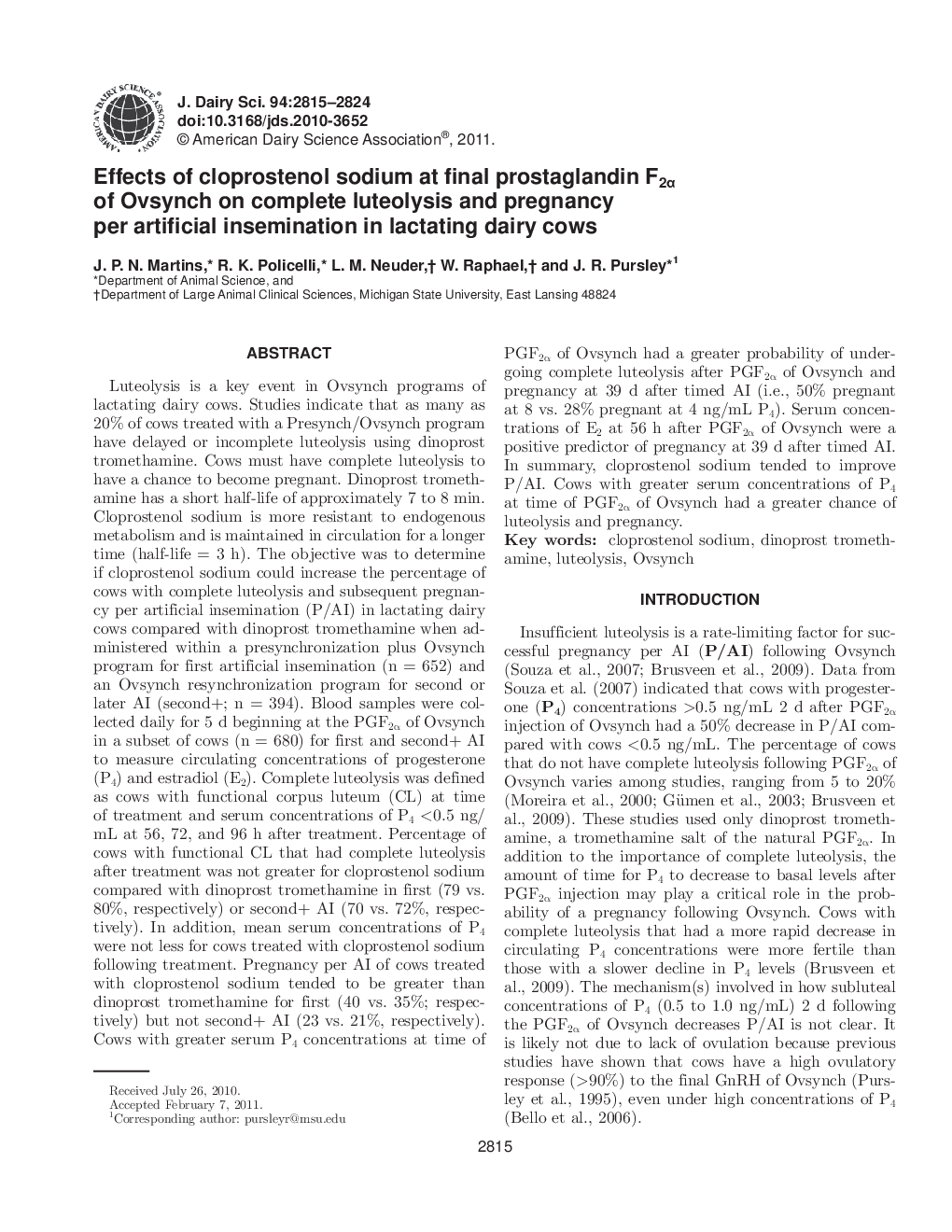| Article ID | Journal | Published Year | Pages | File Type |
|---|---|---|---|---|
| 10978528 | Journal of Dairy Science | 2011 | 10 Pages |
Abstract
Luteolysis is a key event in Ovsynch programs of lactating dairy cows. Studies indicate that as many as 20% of cows treated with a Presynch/Ovsynch program have delayed or incomplete luteolysis using dinoprost tromethamine. Cows must have complete luteolysis to have a chance to become pregnant. Dinoprost tromethamine has a short half-life of approximately 7 to 8 min. Cloprostenol sodium is more resistant to endogenous metabolism and is maintained in circulation for a longer time (half-life = 3 h). The objective was to determine if cloprostenol sodium could increase the percentage of cows with complete luteolysis and subsequent pregnancy per artificial insemination (P/AI) in lactating dairy cows compared with dinoprost tromethamine when administered within a presynchronization plus Ovsynch program for first artificial insemination (n = 652) and an Ovsynch resynchronization program for second or later AI (second+; n = 394). Blood samples were collected daily for 5 d beginning at the PGF2α of Ovsynch in a subset of cows (n = 680) for first and second+ AI to measure circulating concentrations of progesterone (P4) and estradiol (E2). Complete luteolysis was defined as cows with functional corpus luteum (CL) at time of treatment and serum concentrations of P4 <0.5 ng/mL at 56, 72, and 96 h after treatment. Percentage of cows with functional CL that had complete luteolysis after treatment was not greater for cloprostenol sodium compared with dinoprost tromethamine in first (79 vs. 80%, respectively) or second+ AI (70 vs. 72%, respectively). In addition, mean serum concentrations of P4 were not less for cows treated with cloprostenol sodium following treatment. Pregnancy per AI of cows treated with cloprostenol sodium tended to be greater than dinoprost tromethamine for first (40 vs. 35%; respectively) but not second+ AI (23 vs. 21%, respectively). Cows with greater serum P4 concentrations at time of PGF2α of Ovsynch had a greater probability of undergoing complete luteolysis after PGF2α of Ovsynch and pregnancy at 39 d after timed AI (i.e., 50% pregnant at 8 vs. 28% pregnant at 4 ng/mL P4). Serum concentrations of E2 at 56 h after PGF2α of Ovsynch were a positive predictor of pregnancy at 39 d after timed AI. In summary, cloprostenol sodium tended to improve P/AI. Cows with greater serum concentrations of P4 at time of PGF2α of Ovsynch had a greater chance of luteolysis and pregnancy.
Keywords
Related Topics
Life Sciences
Agricultural and Biological Sciences
Animal Science and Zoology
Authors
J.P.N. Martins, R.K. Policelli, L.M. Neuder, W. Raphael, J.R. Pursley,
